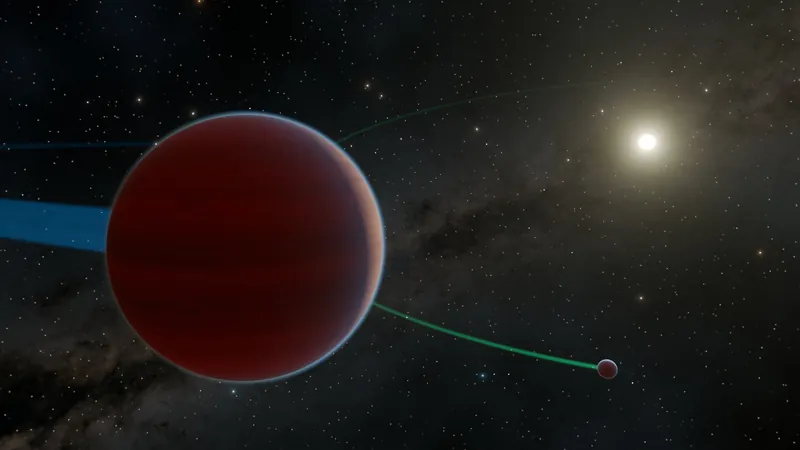
Stunning Discovery: Two Unique Planets Found in KOI-134 System!
2025-07-03
Author: Siti
In an exciting turn of events, a fresh analysis of old Kepler data has unearthed a remarkable planetary system previously thought to contain no planets at all. Now, astronomers have confirmed that the KOI-134 system houses not just one, but two planets, orbiting their star in a mesmerizing dance reminiscent of a classic merry-go-round.
Orbiting their star on distinct planes, these planets exhibit unusual dynamics, with one showing significant variations in transit timing. This groundbreaking find marks the first-ever discovery of a system characterized by such unique orbital characteristics!
Originally, over a decade ago, NASA's Kepler Space Telescope had detected a potential planet in the KOI-134 system. However, scientists mistakenly classified it as a false positive when its transit behavior failed to align with expectations. The irregular transits were so striking that they were filtered out of analysis as anomalies.
Thanks to NASA's commitment to sharing data, researchers can revisit earlier observations—and that's exactly what they did! A new study revealed that the supposed 'false positive' is actually KOI-134 b, a warm Jupiter-sized planet, which has now been confirmed. Even more astonishing, it turns out there is a second planet in this system!
Led by Emma Nabbie from the University of Southern Queensland, this team's findings were published in Nature Astronomy under the title "A high mutual inclination system around KOI-134 revealed by transit timing variations." They revealed that KOI-134 b's transit irregularities—known as transit timing variations (TTVs)—are caused by gravitational interactions with another planet, KOI-134 c.
KOI-134 b can transit its star up to 20 hours 'early' or 'late,' a significant discrepancy that explains its previous classification as a mere candidate. Meanwhile, KOI-134 c, slightly smaller than Saturn and closer to their star, was hiding due to its tilted orbital plane, which prevented it from transiting the star like its sibling.
The mutual inclination between KOI-134 b and c is an impressive 15 degrees. This tilt causes their orbital planes to shift, creating a more complex and dynamic system. They are also linked by a fascinating 2:1 orbital resonance, where KOI-134 b completes one orbit in about 67 days while KOI-134 c completes two in the same timeframe, taking 33-34 days.
This intricate tug-of-war, combined with the unique tilting of their orbits, allows KOI-134 b and c to orbit their star in a pattern reminiscent of two wooden ponies bobbing up and down on a carousel.
From a misleading false positive to a vibrant double-planet system, this discovery is groundbreaking! This KOI-134 system is the first identified compact system with non-flat orbital dynamics featuring significant TTVs, and it stands out in the study of planetary systems.
Interestingly, systems like KOI-134, with high mutual inclinations among close planetary pairs, are rare and often hard to observe. Thus, this study provides invaluable insights into planetary dynamics that illuminate the fascinating and varied nature of our universe!
This research involved collaboration across esteemed institutions such as the University of Geneva, and NASA's retired Kepler Space Telescope, showcasing the power of teamwork in unlocking the mysteries of space.



 Brasil (PT)
Brasil (PT)
 Canada (EN)
Canada (EN)
 Chile (ES)
Chile (ES)
 Česko (CS)
Česko (CS)
 대한민국 (KO)
대한민국 (KO)
 España (ES)
España (ES)
 France (FR)
France (FR)
 Hong Kong (EN)
Hong Kong (EN)
 Italia (IT)
Italia (IT)
 日本 (JA)
日本 (JA)
 Magyarország (HU)
Magyarország (HU)
 Norge (NO)
Norge (NO)
 Polska (PL)
Polska (PL)
 Schweiz (DE)
Schweiz (DE)
 Singapore (EN)
Singapore (EN)
 Sverige (SV)
Sverige (SV)
 Suomi (FI)
Suomi (FI)
 Türkiye (TR)
Türkiye (TR)
 الإمارات العربية المتحدة (AR)
الإمارات العربية المتحدة (AR)